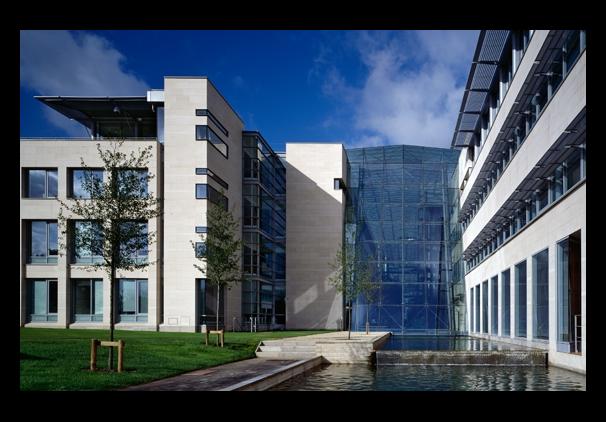Several international architectural projects prove that Norwegian architects are much-coveted worldwide.

Denmark’s new super hospital
In 2011 Curavita (Nordic, AART and Arkitema architects) won the competition for the new hospital in Gødstrup, one of Denmark’s six new “super-hospitals”.
The new hospital will be located on a new ground between Herning and Holstebro and covers the region west of the Mid-Jutland. It is planned with a total of 135 000m², 80.000m² of which will be built in phase 1.
Gødstrup hospital will contain all emergency functions, surgery, diagnostic imaging and laboratory, as well as outpatient clinics and general wards. In the project proposal, we have focused on effective solutions as well as the well-being of patients and staff.
The hospital staff has their own hub with office and meeting areas along the transport ring. Areas of the hospital with high patient flow such as outpatient clinics and diagnostic imaging, are placed near the entrance and vestibule, while the more “private” units such as wards and operation is placed in the upper floors. The facility is designed around several inner courtyards which stretch out onto the landscape. In this way it is very good contact with nature and green spaces and good daylight conditions in all parts of the plant.

From the waiting area there is access to the courtyards and gardens, all wards have large terraces and stunning views of the countryside of Jutland.
The hospital is scheduled to open in 2017.

China Eastern Airlines Main Office
Niels Torp Architects were successful in its bid for the new head office, hotel and operation center for 12,000 employees in China Eastern Airlines, China’s second largest airline.
The building will in total encompass 13 buildings linked together over an area of 245 000 m2. The building is to be completed in 2015.
“Seen from the air, the buildings resemble a flower,” says Niels Torp, adding that the company was very pleased to be successful in its bid in this international competition.
“We have made a concept that is quite different. Although a vast building, it is a “soft” building with green spaces in between the buildings and framed in by a green park”.
Niels Torp Architects has previously designed similar projects, amongst others when they made the Head Office for British Airways in London (see below). There you will also find lush green areas between the buildings and a surrounding park.
“This building looks very different than the one in London, but will be constructed on the same principals. The design is atypical for Shanghai. The buildings are from 6 to 9 floors high with two towers of 9 floors”
The projects architectural side is being managed by responsible designer Niels Torp and project manager Øyvind Neslein.

Rajiv Gandhi International Airport, Hyderabad, India
The new Passenger Terminal Building in Hyderabad is the first airport being developed entirely by a private enterprise in India. The 105,000m2 terminal is designed to handle 12 million passengers per annum with 12 contact stands. The project completes, from concept design to construction, in a record 30 months.
The airport was designed by Nordic Office of Architecture in Oslo, Norway, and opened in 2008.

Library of Alexandria, Egypt
The decision to rebuild Bibliotheca Alexandrina, the most famous library of all time, was announced in 1989 with the Norwegian architects Snøhetta winning the open international competition for its design.
Alexandria, founded in 332BC, was one of the greatest cities of the classical world and remained the capital of Egypt until 969AD.
The new library, built roughly on the site of the original Bibliotheca Alexandrina, is designed as a simple circle, 160 meters in diameter, going from 15.8 meters underground to 37 meters above ground. Seen from above it proposes the image of the sun (Egyptian hieroglyphs show the sun generally as a simple disk).
The partly glazed slanting roof of the main library has been designed to angle sunlight, at optimum levels throughout the year, down to the desks and shelves set on tiers of galleried floors beneath it.
The library opened in 2001
Photo (above): Ibrahim Nafie, courtesy Bibliotheca Alexandrina

British Airways Main Office, Waterside, England
When British Airways briefed architectural practice Niels Torp to design a headquarters building close to Heathrow Airport that would bring together 2,500 people from 14 locations into one workplace for the first time, the aim was to create a community based on openness and team working − and to reflect the airline’s new inclusive ‘citizen of the world’ corporate identity.
The result is a group of six buildings or ‘houses’, known collectively as Waterside. Each ‘house’ has a different theme from world geography and sits along a central street 175 metres long. The covered street, a development of Torp’s famous 1988 SAS building in Stockholm, is not just the focus for the whole building but an active work environment towards which people gravitate to collaborate, meet and eat. From the underground car park, staff is directed to emerge into the ‘street’, which forms a central thoroughfare as well as providing a stimulating atmosphere.
The construction of the main offices was completed in 1998.

Royal Jordanian Airways main offices, Amman, Jordan
The new corporate headquarters for Royal Jordanian Airlines, Jordan’s national carrier, followed on in 2012 from Niels Torp’s pioneering airline offices for SAS in Stockholm and British Airways at Heathrow (see above). Torp’s forte is architectural de-institutionalization: breaking down large organizations into manageable, humanly-scaled elements linked by a network of internal streets to encourage casual interaction.
Though this latest project finds him on familiar territory programmatically, it transplants the cool-headed, social idealism of Scandinavia to the very different culture, context and climate of Amman. But the Torp signature is still clearly identifiable. Two separate blocks, one conventionally orthogonal and the other cranked into an aerodynamic prow, are linked and penetrated by internal bridges and routes that break up the floor plates into a series of corporate communities. Their external treatment is very different, with the orthogonal block more massive and imperforate, and the serpentine prow clad in a layered, lightweight skin of glass and louvers. The static, linear block anchors the building and forms a bulwark against future development to the north, while its more fluid south counterpart has license to be an expressive urban and corporate landmark.

The King Abdulaziz Center for World Culture
is a monumental undertaking by Saudi Aramco, the world’s leading oil company, to inspire, nurture and promote creativity, learning and cross-cultural engagement throughout Saudi Arabia.
The Cultural Center is designed by the Norwegian architects Snøhetta to be a beacon of social development and cultural progress. It will give visitors the opportunity to experience and enjoy the culture of Saudi Arabia, and help them to understand how the Kingdom’s past links to the present and can propel Saudis to a creative and prosperous future.
Constructed on the site of Saudi Arabia’s very first oil well, the Cultural Center commemorates the Kingdom’s discovery of oil while pointing to a future fueled by ideas, creativity and innovation.
Construction is scheduled for completion in early 2015.
Istanbul New Airport
The six-runway hub will be constructed on 77 million square meters of land near Istanbul, and will have a capacity of 150 million passengers a year – 60 million more than Hartsfield-Jackson Atlanta International Airport, currently the busiest in the world.
The airport will be built in four stages. The first will be completed in 2017, after which it will be operational with an annual capacity of 90 million, according to Turkey’s transport minister, Binali Yildirim.

“It is obvious a new airport is needed,” he said, adding that the plans would help boost the country’s bid for the 2020 Olympics.
Currently Istanbul has two airports, Ataturk, which handles around 45 million passengers a year, and Sabiha, which handles 15 million.
Architects are Nordic Office of Architecture in Oslo, Norway.

Busan Opera, South Korea
The spirit of Opera can be developed only by architecture which joins in a whole some of the common points of human existence. In contemporary life, a need for humanity has developed to the limits to, at least for a moment, go back to places which in his/her entire memory represent places of peace and rest. Relaxing after everyday efforts, by which the body and the soul are exposed, gains the sense of myth of healing in modern life.
The location of Opera in many views represents a place which should, for Busan, take the role of a mediator between a human and the joy provided by resting and relaxing. The ability of locating natural resources for intimacy and differentiating the place of an individual in a great plan of existence is a means of moving around in that area.
The structure of the complex is experienced as a wave. It reminds on overlapping and dancing of waves so that Opera blends in with the environment. The opera is designed by the Norwegian architects Snøhetta, who also designed the much acclaimed operas house in Oslo.
Norwegian Architects Conquer the World, compiled and edited by Tor Kjolberg


